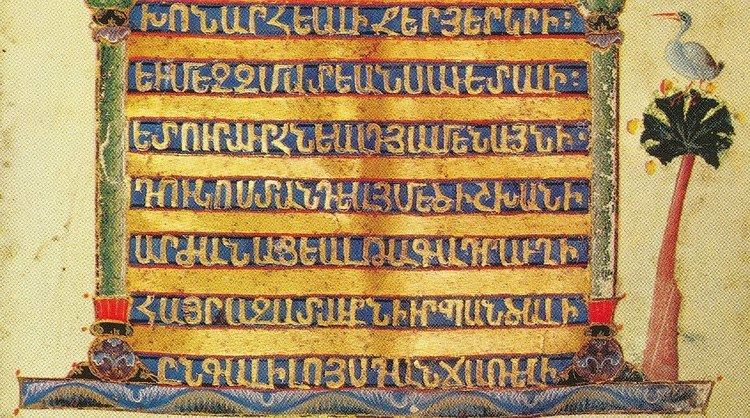ISO 639-3 xcl | ||
 | ||
Language family Indo-EuropeanClassical Armenian Early forms Proto-ArmenianClassical Armenian Writing system Armenian alphabet (Classical Armenian orthography) | ||
Classical Armenian (Armenian: գրաբար, grabar, Western Armenian krapar, meaning "literary [language]"; also Old Armenian or Liturgical Armenian) is the oldest attested form of the Armenian language. It was first written down at the beginning of the 5th century, and all Armenian literature from then through the 18th century is in Classical Armenian. Many ancient manuscripts originally written in Ancient Greek, Persian, Hebrew, Syriac and Latin survive only in Armenian translation.
Contents
Classical Armenian continues to be the liturgical language of the Armenian Apostolic Church and is often learned by Biblical, Intertestamental, and Patristic scholars dedicated to textual studies. Classical Armenian is also important for the reconstruction of the Proto-Indo-European language.
Vowels
There are seven monophthongs:
There are also traditionally six diphthongs:
Consonants
In the following table is the Classical Armenian consonantal system. The stops and affricate consonants have, in addition to the more common voiced and unvoiced series, also a separate aspirated series, transcribed with the notation used for Ancient Greek rough breathing after the letter: p῾, t῾, c῾, č῾, k῾. Each phoneme has three symbols in the table. The leftmost indicates the pronunciation in International Phonetic Alphabet (IPA); in the middle is the corresponding symbol in the Armenian alphabet and the rightmost is its transliteration in the Latin alphabet (following the 1996 ISO 9985 standard).
The letter f (or ֆ) was introduced in the Medieval Period to represent the foreign sound /f/, the voiceless labiodental fricative; it was not originally a letter in the alphabet.
